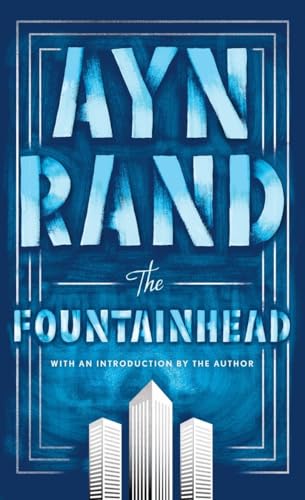Hey there, book lovers! Today we’re chatting about a heavy hitter: The Fountainhead. This review is going to tackle some deep stuff—like individualism vs. collectivism, character development, architectural themes, and the hefty philosophical underpinnings. Grab your hard hat and your thinking cap; it’s going to be one wild construction site of ideas!
In a nutshell
The Fountainhead by Ayn Rand is a gripping novel set in the world of architecture. It’s a must-read for fans of philosophical fiction and drama. The book explores deep themes like individualism vs. collectivism, integrity, and creativity. The story follows Howard Roark, an ambitious and innovative architect, as he battles societal norms and personal adversaries. Perfect for those who love thought-provoking narratives mixed with intense character development and philosophical undertones.
Individualism vs. Collectivism in Ayn Rand’s Fountainhead
In The Fountainhead, Ayn Rand throws a curveball by pitting individualism against collectivism. The book’s protagonist, Howard Roark, is the poster boy for individualism. He’s the guy who would rather build his own sandcastle than play in someone else’s. I remember arguing with my friend John about Roark. John said Roark was too stubborn. I said he was a hero. It almost cost us a game of Scrabble, but I digress.
Roark’s whole life screams, “I am my own person!” He doesn’t care what others think. He designs buildings that are as unique as a unicorn in a haystack. Then you have Peter Keating, who is the collectivitist. He’s all about what others want. Keating’s motto could be, “If the crowd loves it, I love it too.” This contrast is at the heart of the story and gives readers a lot to chew on. The book made me think about my own life. Am I a Roark or a Keating?
Sure, sometimes the book gets preachy. Ayn Rand loves to hammer her point home like a carpenter with a shiny new hammer. But the message is clear. Individualism stands tall while collectivism bows to the crowd. This can be inspiring, but also a bit tiring. You kind of wish Roark would chill for a second and maybe go to a movie or something.
In the next section, I’ll spill the beans on Character Development and trust me, it’s juicier than a summer watermelon.
Character Development in ‘The Fountainhead’
Ever watched a trainwreck you can’t look away from? That’s how witnessing the character growth in ‘The Fountainhead’ feels. Imagine taking a selfie every day for a year and watching yourself change. The growth of Howard Roark, Peter Keating, and Dominique Francon is kinda like that, but with more drama, fewer filters, and zero duck faces.
Howard Roark is your classic stubborn genius. He’s like that kid in school who refuses to cheat on a test, even if the answers are written on the blackboard. You see him start as a relentless idealist and watch him face the world’s pressures without losing his core beliefs. It’s like watching Rocky, but with architecture instead of boxing gloves.
Then there’s Peter Keating. Talk about a roller coaster! He’s that guy who would rather be liked than be right. Initially, you might think he’s the hero – a guy hustling his way to the top. But soon, you realize he’s making deals with the devil, sacrificing his soul bit by bit. It’s like watching someone trade their vintage comic collection for a box of crackers.
Lastly, Dominique Francon, the enigmatic queen of the drama club. She seems torn between loving Roark and despising the world that doesn’t understand him. Her journey is like an intense episode of ‘Survivor,’ where she tries to outwit, outplay, and outlast… herself!
Each character in ‘The Fountainhead’ evolves in unexpected ways, making you question your own values and choices. It’s a thrilling ride through human psychology.
Next up, we’re swapping character dilemmas for blueprints and bricks as we delve into the architectural themes of ‘The Fountainhead’!
Architectural Themes in The Fountainhead
Ayn Rand’s The Fountainhead totally overflows with architectural themes that are as bold and striking as Howard Roark’s designs. This book doesn’t just talk about buildings, it turns them into symbols of human spirit, ambition, and creativity. Imagine skyscrapers not just towering over the city, but also towering over the mundanity of everyday life. Each one is like a shout of ‘Look what I can do!’ to the world.
One of the standout architectural themes in the book is the relentless battle between classical and modern architecture. Roark represents the modern visionary who is all about sleek, innovative designs. On the other hand, you have the stodgy, old-school architects who cling to cookie-cutter, traditional styles. When Roark designs a building, it’s not just functional, it’s a work of art, a bold statement against conformity. It’s like the building is saying, ‘Why fit in when you can stand out?’ Stunning, right?
Roark’s belief in ‘form follows function’ is hammered throughout the plot like the nails into his blueprints. He refuses to add unnecessary decorations or follow outdated styles. His refusal to compromise his artistic vision leads to some fiery confrontations and heart-pounding drama. Trust me, these sections will have you biting your nails more than a horror movie.
Despite the many triumphs, there’s also a subtle critique of the harsh realities of modern architecture. Not all of Roark’s peers get his vision, and many battles ensue. The book brilliantly captures the passion and madness that often come with genius.
Next up, we’ll talk about the deep Philosophical Underpinnings that make this book a cult classic.
The Philosophical Roots of The Fountainhead
If you’ve ever wondered about the philosophical roots of a book, The Fountainhead is a treasure trove. Ayn Rand really went all-in on her philosophy of Objectivism. She didn’t just sprinkle it in—she built the book around it! Think of it like the foundation for a skyscraper, but with fewer bricks and more dramatic monologues.
Objectivism is the belief in reason, individualism, and rational self-interest. Rand introduces us to Howard Roark, the poster child for these ideals. This guy is so into being himself, he probably wouldn’t even follow his own shadow if it started behaving differently. Roark’s can-do, must-do, will-do attitude is the engine that drives the plot and the philosophical discussions.
On the flip side, you have characters like Peter Keating who, let’s face it, wouldn’t know an original thought if it hit him over the head with a T-square. He is the embodiment of collectivism and societal pressures. He’s the guy who would bring a pre-made sandwich to a potluck and call it a chef’s special.
Rand masterfully uses these characters to paint a vivid picture of her philosophical beliefs. It’s a bit like watching a philosophical tennis match, but with more dramatic flair and fewer rackets. The Fountainhead isn’t just a story; it’s a manifesto wrapped in an architectural drama.
So, if you’re up for some heavy-duty thinking mixed with plot twists and existential crises, this book is for you. I totally recommend it! Dive into The Fountainhead if you dare, but don’t expect any easy answers—just lots of food for thought.
Conclusion
Wrapping up this review of The Fountainhead: Ayn Rand crafts a compelling tale on individualism vs. collectivism. Characters like Roark and Keating bring depth and drama. The architectural themes add a bold flavor, while the philosophical underpinnings prompt deep thinking. It’s not perfect; some parts drag, and Roark can be a bit much. But overall, it’s a must-read for anyone who loves a mix of innovation, drama, and philosophy.


